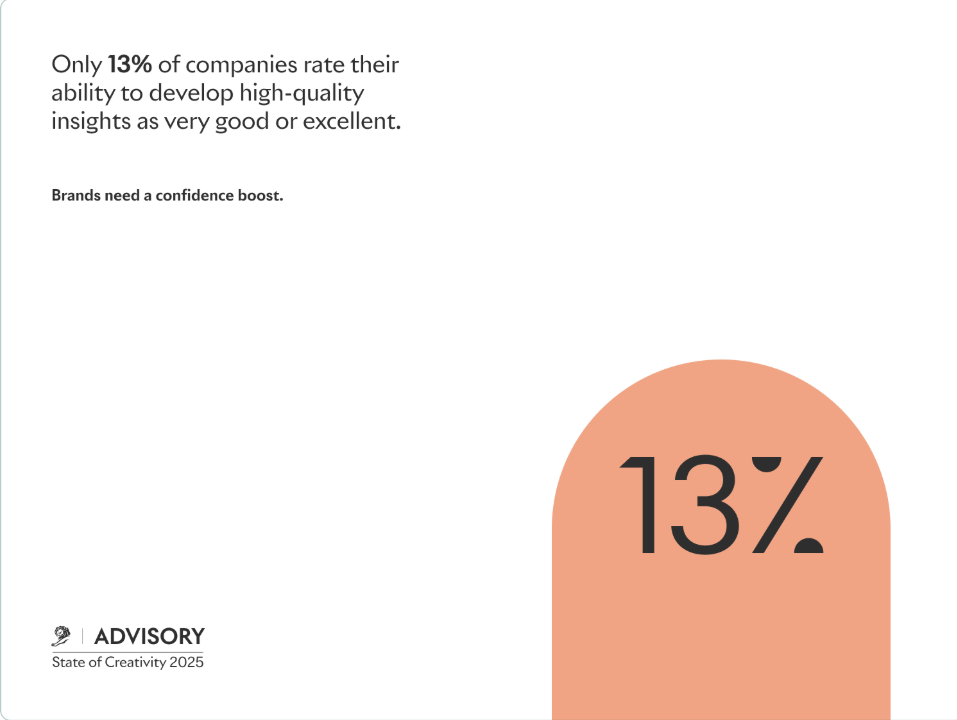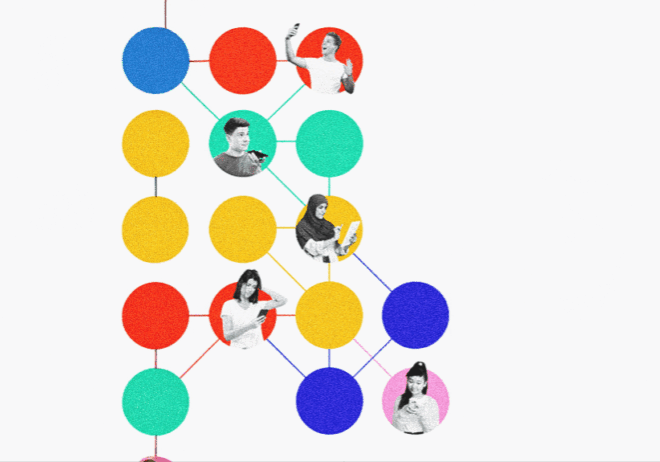
Marketing Insight ‘Famine’: Over 50% Of Brands Lacks Quality Insight
Advertising and marketing industry is suffering from a marketing insight famine. 51% of brands say their insights are too weak for creative work, according to State of Creativity by Cannes Lions 2025.
Every week and month, hundreds of reports and studies, packed with graphs and pie charts from the Moon to Venus, keep flooding the industry. Yet, the sector continues to suffer from a lack of actionable insights.
An abundance of data doesn’t automatically translate into insight. Insights are more about relevance than just observations drawn on a chart.
That’s what we are diving deep into, understanding why the marketing industry is starving for insights when data and content are available at every nook and corner.
More than half of companies fail in developing high-quality insights
Brands face massive challenges in the era of democratized content, tools, and technology. Most audiences are online, constantly sending signals, offering better data for personalization, and targeting.
Yet only 13% of companies rate their ability to develop high-quality insights as very good or excellent, reports State of Creativity by Cannes Lions 2025.

Isn’t it ironic that 51% of companies rate their ability to develop high-quality insights as poor or very poor? The limitations in performance and effectiveness are mind-boggling.
The issue isn’t a lack of knowledge in analyzing reports or studies. It’s deeper than that.
To make it more relatable, think of paper companies that sell all types of paper to various industries. The tech industry is the largest buyer. The observation here is valid, but astute interpretation could work better for marketing.
Asking more relevant questions like:
- Which departments are using these papers?
- Who are the most likely buyers?
- What personality traits do they have?
This kind of interpretation is where insights are born—not from numbers alone.
What’s posing as a barrier that leads to insight famine?
The biggest barrier to developing better insights is simply a lack of clarity on the subject.
According to research, 18% of brands and 29% of partners cited this as their primary challenge.
Context is what makes data humane and beyond numbers. Yes, that’s what it should be all about.
Here’s an interesting note.
Privacy in the digital world is as important as sleep is to good health. Mobile phone companies, as well as tech bros, regularly talk about data theft, identity theft, privacy breaches, and all the jargon that scares consumers.
But Apple takes it further, molding the issue into a narrative and perfecting it to the core.
Apple’s storytelling follows the mantra: “Don’t talk unless your message requires it.” In one campaign, it turns cameras into birds hovering around, eerie and disturbing, but relatable. The audience grasps the message without heavy-handed explanation, and the campaign becomes a treat to the eyes.
So, here’s what’s happening: data highlights privacy breaches everywhere, but Apple converts this into a relevant insight, capturing both creativity and trust.
Dig enough to find gold and avoid insight famine
Take CeraVe, for example. They dug deep into audience behavior and found a quirky, yet viral, opportunity.
A bizarre theory popped up on Reddit claiming that Hollywood’s famously youthful actor, Michael Cera, might secretly be behind CeraVe—just because of the shared syllable “Cera.” No facts, just vibes.
CeraVe dropped a bombshell at the Super Bowl: “Not by Michael Cera.” The conspiracy was debunked, but the campaign had already created waves—garnering 9 billion impressions.
‘The best insights tap into our psychology and surprise us—like hearing a line in a poem that just hits you. Too often we don’t dig deep enough to find the good ones.’
Allison Pierce, Chief Creative Officer at VML
Data is boring—but when it’s turned into a big, beautiful wave of revelation, that’s when the magic happens.
The misalignment between brands and agencies
A staggering 26% of brands believe they’re good at generating insights, but only 10% of agencies agree.
This isn’t just disagreement—it’s misalignment.
And it shows up in the work: campaigns with zero tension, zero edge, and zero memory.
Solutions to water down the ‘Insight Famine’
We’re swimming in data but starving for insights. IBM reports that 90% of the world’s data has been generated in the last two years alone. Meanwhile, WARC points out that marketers are still scrambling to turn this flood of information into actionable, human-centered insights. The problem isn’t scarcity—it’s interpretation.
AI: the helper, not the hero
AI is helping marketers cut through noise and surface patterns that humans might miss. Marketing Week reports that AI can replicate real survey results with up to 95% accuracy, making it a powerful tool for spotting trends and consumer behaviors.
But here’s the catch: when brands lean too hard on data, they risk letting spreadsheets steer creative thinking rather than guide it. Numbers are informative, not inspirational. A chart can show what’s happening, but it takes human curiosity, empathy, and imagination to ask why and explore what if.
It’s teamwork
Insight development isn’t a solo act; it’s collaborative. The best breakthroughs come when analysts, creatives, researchers, and strategists sit at the same table and challenge one another. Data alone won’t crack the code; diverse perspectives will.
Diversification of teams and methods
Mark Ritson’s advice is simple and brutal: “Do a 180.” Step out of your own assumptions and biases. Look through the lens of the consumer, not from the comfort of your desk, dashboards, or past campaigns.
Try mixing research methods—ethnography, focus groups, social listening, behavioral data—and encourage cross-disciplinary thinking. A team that thinks differently asks better questions, which lead to deeper insights.
Cut to the chase
Marketing ‘insight famine’ has been spreading significantly. It’s choking creativity due to a scarcity of actionable ideas and proper interpretation of data. However, opportunities can emerge even from scarcity if we dig deep, sift information with the right tools, and incorporate diverse voices.

